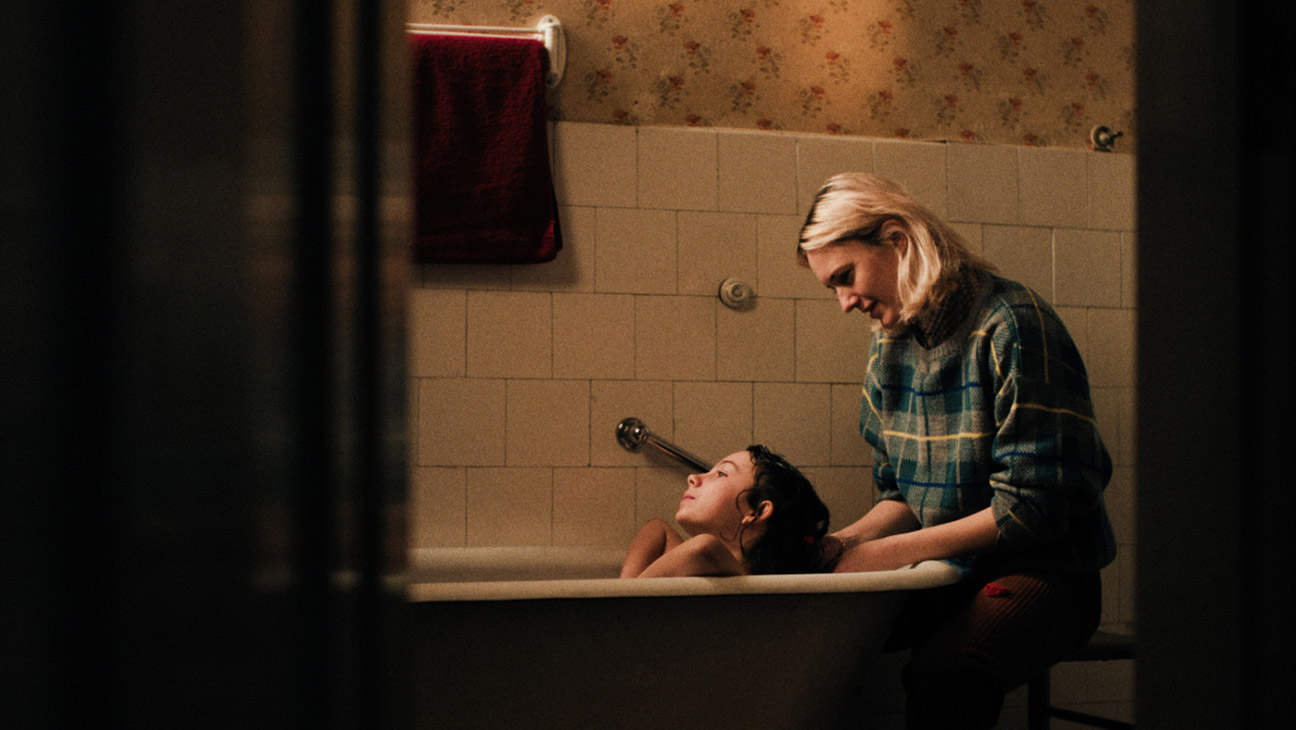Being a single mom and a successful painter is already a tough act to maintain. But doing so as an exile who escaped the Soviet bloc and suffered deep trauma for doing so, is even more distressing — especially when your past comes back to haunt you.
Such are the burdens faced by Perla, the titular heroine of Alexandra Makarova’s promising second feature, which screened in Karlovy Vary after premiering at Rotterdam back in January. Stark and tense, with an impressive eye for period detail, the film is at once a portrait of a rebellious female artist and a time capsule revealing lives torn apart by the Iron Curtain only a decade before it lifted.
Perla
The Bottom Line
Authentically stark.
Venue: Karlovy Vary International Film Festival (Horizons)
Cast: Rebeka Polakova, Simon Schwarz, Noel Czuczor, Carmen Diego, Hilde Dalik
Director-screenwriter: Alexandra Makarova
1 hour 51 minutes
Like a cross between Joanna Hogg’s The Souvenir and Pawel Pawlikowski’s Cold War, Perla shuffles between scenes of postmodern artistic creation and Soviet-era political strife, focusing on a Slovakian painter (Rebeka Polakova) trying to raise her daughter, Julia (Carmen Diego), in Vienna circa 1981.
It’s already been years since Perla escaped over to the West, and despite her accent she’s managed to adapt well to life in Austria. Gaining renown for her Jean Dubuffet-style art brut canvases, she’s about to have her first solo show in New York. And she’s also begun a passionate affair with Josef (Simon Schwarz), a globetrotting bon vivant who worships Perla as both an artist and a lover.
But all of this comes crumbling down when Julia’s father, Andrej (Noel Czuczor), is released from prison back in Slovakia. He and Perla clearly have a troubled past together, though it takes some time for the film to reveal what happened to them. When Andrej calls up asking to see his daughter and claiming he’s dying of cancer, Perla has no choice but to sneak into her homeland with Julia and Josef in tow.
Makarova and cinematographer Georg Weiss capture the family saga in fixed shots that often play out uncut, with the camera observing from a safe distance. This gives the actors a fair amount of space to perform in while allowing us to grasp all the nuances of Klaudia Kiczak’s sets, which convincingly recreate the muted color tones of the era. There’s an underlying coldness to such a style that reflects the time period as well. But the film also features sudden bursts of emotion, especially in the scenes between mother, daughter and a father who disappeared for so many years.
Perla eventually finds herself caught between two lives — the one she led in Slovakia as a young artist in love with Andrej, a photographer whose career ended when he was arrested, and the one she’s built for herself abroad, as a promising painter and a fun and caring mother to Julia. The psychological tug-of-war is enough to make her lose her mind, which seems to happen once they make it to the East. One scene especially underscores her mood: In a gloomy cafeteria, Perla orders too many dishes for the table, as if to prove she doesn’t need to respect Soviet rationing. When a man chastises her for being greedy, she stuffs her face to the point of vomiting.
The director was partially inspired by the story of her own mother, a Slovakian artist who raised her in Austria (the paintings seen on screen are hers), and there’s much about this drama that feels authentic. The sequences set in Kosice (a city in eastern Slovakia), as well as in the tiny mining town where Perla grew up, are particularly realistic, as if they were lensed back in the day.
It’s during her return home that Perla comes to terms with what she’s been running away from: general Soviet oppression, but also a country that has no place for a female artist. She learns — or rediscovers — that her native land is deeply chauvinistic, whether in the way Andrej lashes out at her, or in a haunting town ritual that has men grabbing women and plunging them into a stream. It’s meant to be a gag, but the act forces Perla to relive the trauma she experienced when illegally crossing the border.
There are times, however, when Makarova can’t quite decide what to focus her attention on: the political strife of the early 1980s? Perla’s artistic career? The mother-daughter story? The love triangle between Perla, Josef and Andrej? This can muddle the drama in places, although the direction is sharp and sober enough to keep the film contained.
The cast is strong all around, and Polakova (The Auschwitz Report) is so believable as the painter Perla Adamova that for most of the movie, it looks like we’re watching an actual biopic. Indeed, verisimilitude is probably the greatest strength here, whether in the uncanny set design or the way Makarova recreates the fraught emotional atmosphere of life at the end of the Cold War. Perla is a throwback to that troubled period, allowing us to witness it from a certain remove that speaks to our time as well.
